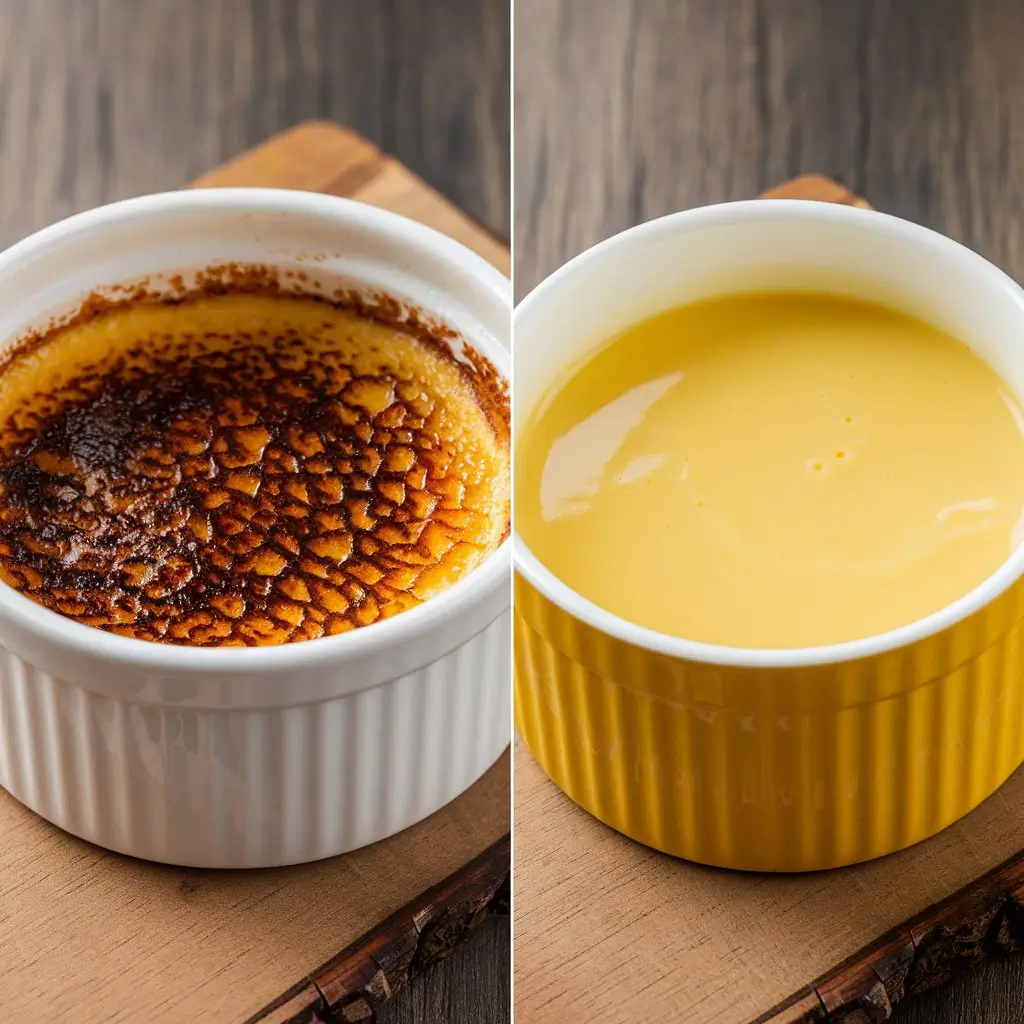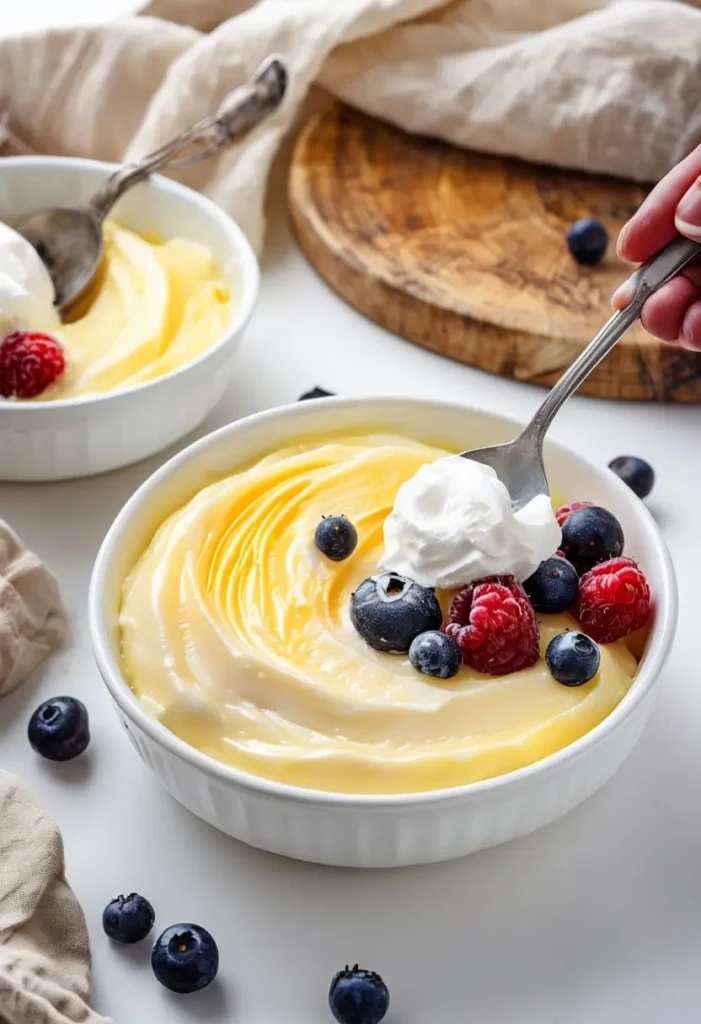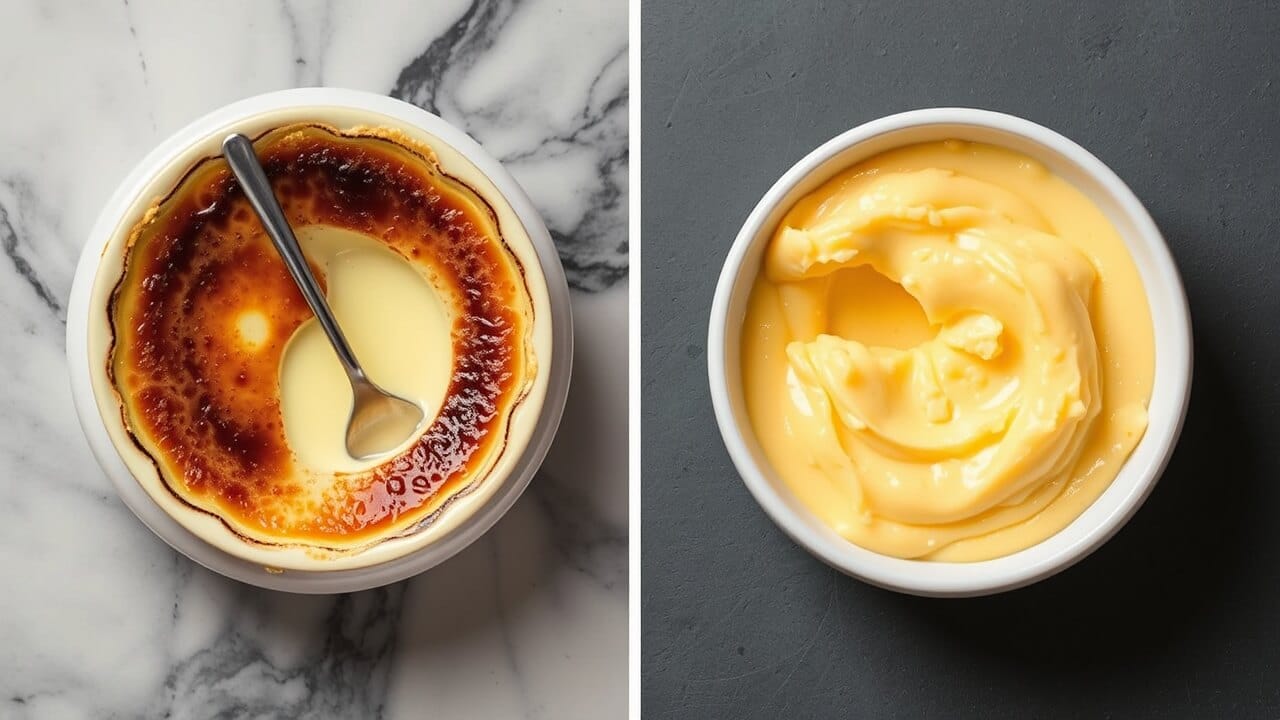When it comes to desserts, crème brûlée and custard often leave people scratching their heads. Both are creamy, luxurious treats, yet they have distinct characteristics that set them apart. In this article, we’ll uncover the differences between crème brûlée and custard, delving into their history, preparation methods, and unique features. By the end, you’ll know exactly what makes each dessert special and which one suits your palate best.
Understanding Crème Brûlée and Custard
What Is Crème Brûlée?
Crème brûlée is a decadent French dessert that translates to “burnt cream.” It features a creamy custard base topped with a layer of caramelized sugar. Famed for their deliciously complemented creamy and crispy textures in dessert, they have custard underneath and burnt sugar on top. The layer caramelization is done typically by torching or broiling.
What Is Custard?
Custard, on the other hand, is more of an umbrella term. It refers to a range of dishes made from a mixture of milk or cream, egg yolks, and sugar. Custard can be thickened by heat or with the addition of starch. While it’s often sweet, savory versions (like quiche) exist as well. Popular variations include pastry cream, flan, and even egg-based puddings.
Origins and History
The French Roots of Crème Brûlée
Crème brûlée has a rich history rooted in French culinary tradition. François Massialot first documented it in his 1691 cookbook, presenting it as a dessert fit for royalty.
However, some historians argue that versions of the dish existed earlier in English and Spanish cuisines.
The Evolution of Custard
Custard boasts ancient roots. The earliest versions originated in Roman times, where people combined eggs and milk to create rich dishes. Over time, custard recipes evolved, becoming integral to desserts like pies, tarts, and trifles across Europe.
Ingredients Breakdown
Core Ingredients of Crème Brûlée
- Cream: The base ingredient, providing richness.
- Egg Yolks: Used to thicken the custard.
- Sugar: Adds sweetness and forms the caramelized crust.
- Vanilla: Offers a subtle yet aromatic flavor.
Core Ingredients of Custard
- Milk or Cream: The liquid base, often lighter than in crème brûlée.
- Eggs or Yolks: Act as a thickening agent.
- Sugar: Adds sweetness.
- Optional Starch: Cornstarch or flour may be added for stability.
Key Difference: Crème brûlée uses a higher cream-to-milk ratio, while custards often rely on milk for a lighter consistency.
Texture and Consistency
One of the defining differences between crème brûlée and custard is texture.
- Crème Brûlée: Smooth, velvety, and slightly dense, thanks to the heavy cream. Its top layer provides a delightful crunch that contrasts with the creamy base.
- Custard: The texture varies widely, depending on the recipe. It can range from silky and pourable (as in pouring custard) to firm and sliceable (as in flan).
Cooking Techniques
How Crème Brûlée Is Made
To ensure even cooking and prevent curdling, you bake crème brûlée in a water bath. Once chilled, you sprinkle sugar on top and caramelize it using a torch or broiler.
How Custards Are Made
Custards are versatile and can be cooked on the stovetop, baked in the oven, or steamed. The cooking method affects the texture, from runny sauces to firm, baked custards.
Equipment and Tools
For Crème Brûlée:
- Kitchen Torch: Essential for caramelizing the sugar topping.
- Ramekins: Small, heat-resistant dishes for individual servings.
For Custard:
- Saucepan: For stovetop custards.
- Mixing Bowls and Whisks: To combine ingredients smoothly.
Both require basic kitchen tools like a thermometer to prevent overcooking.
Presentation and Serving Styles
Crème Brûlée:
Crème brûlée is served in individual ramekins. Its top is caramelized just before serving, creating a warm, crackling sugar crust over a chilled custard base.
Custard:
Custard is highly versatile. It can be poured over desserts, layered in trifles, or served in bowls with garnishes like fruit or chocolate.
Flavor Variations
Crème Brûlée:
Classic crème brûlée is vanilla-flavored, but modern chefs experiment with infusions like lavender, coffee, or citrus.
Custard:
Custards come in endless flavors, from chocolate and caramel to exotic options like coconut or matcha.
Dietary Adaptations
Crème Brûlée:
- Substitute coconut milk or almond milk for dairy.
- Use sugar alternatives for low-sugar versions.
Custard:
- To adapt custards for vegan diets, replace eggs with cornstarch or agar-agar.
- Dairy-free options include oat milk or soy milk.
Popular Cultural References
Crème Brûlée in Modern Culture
Crème brûlée has appeared in countless films, books, and even reality TV shows, symbolizing luxury and sophistication.
Custard’s Global Influence
Custard plays a role in diverse cuisines, from British trifles to Portuguese pastel de nata.
Nutritional Differences
Caloric Comparison:
- Crème brûlée is richer due to its cream content. A serving can contain around 250–300 calories.
- Custards vary; lighter versions may contain just 100–150 calories per serving.
Nutritional Profiles:
Crème brûlée typically contains more fat and sugar, while custards offer flexibility to suit various dietary needs.
Crème Brûlée and Custard Recipes
Simple Crème Brûlée Recipe

Ingredients:
- 2 cups heavy cream
- 5 egg yolks
- ½ cup sugar
- 1 tsp vanilla extract
- Extra sugar for topping
Instructions:
- Preheat the oven to 325°F (160°C).
- Heat cream until steaming.
- Whisk egg yolks and sugar, then add cream gradually.
- Pour into ramekins and bake in a water bath for 30–35 minutes.
- Chill, then caramelize sugar on top.
Easy Custard Recipe

Ingredients:
- 2 cups milk
- 4 egg yolks
- ⅓ cup sugar
- 1 tsp vanilla extract
Instructions:
Heat milk gently.
Beat yolks and sugar, then add warm milk.
Cook over low heat until thickened.
Serve warm or chilled.
Common Mistakes
Crème Brûlée:
- Overbaking results in a grainy texture.
- Torching sugar unevenly can burn it.
Custard:
- Curdling occurs if cooked at high temperatures.
- Starch-based custards may become lumpy without constant stirring.
FAQs on Crème Brûlée and Custard
What is crème brûlée made of?
Crème brûlée is made of cream, egg yolks, sugar, and vanilla, topped with a caramelized sugar crust. For more information, visit this What is crème brûlée made of?
What does crème brûlée taste like?
Crème brûlée has a rich, creamy texture with a sweet vanilla flavor, complemented by the crispy, caramelized sugar topping. For more information, visit this What does crème brûlée taste like?
How to make a crème brûlée top?
To make a crème brûlée top, sprinkle a thin, even layer of sugar over the custard and use a kitchen torch to caramelize it until golden and crisp. For more information, visit this How to make a crème brûlée top?
Conclusion
Crème brûlée and custard are desserts based on a common base but differ in preparation, texture, and flavor. In the former, the attraction lies in the caramelized top, while in the latter, it is indeed versatility. Be it a restaurant classic experience or a kitchen experimentation, both desserts promise delightful tastes. For more recipes, visit this Zenrecipes.net.


2 thoughts on “What’s the difference between crème brûlée and custard?”
Comments are closed.